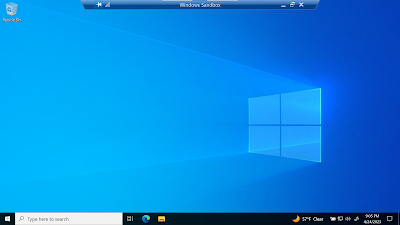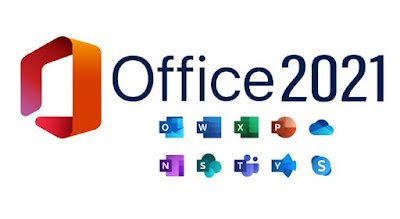Sunday, October 08, 2023
TreeSize Free
Sunday, September 10, 2023
Kasa Doorbells
Sunday, July 16, 2023
To VPN or Not
- Type regedit into the search box and click Registry Editor.
- Go to HKEY_LOCAL_MACHINE\SYSTEM\CurrentControlSet\Services\Dnscache\Parameters.
- Right-click on the Parameters folder and click New > DWORD (32-bit) Value, then name it EnableAutoDOH.
- Double-click on the new key and set its value data to 2.
- Cloudflare - Primary: 1.1.1.1, Alternate: 1.0.0.1
- Google - Primary:8.8.8.8, Alternate: 8.8.4.4
- Quad9 - Primary: 9.9.9.9, Alternate: 149.112.112.112
- Select Settings in the Start menu.
- Open Network settings.
- Under Network status, open the Properties menu for the desired internet connection.
- Click Edit under DNS settings.
- Select the Manual option, and then specify the Preferred DNS and Alternate DNS IP addresses. DNS providers currently supported by Windows 10 are:
● Cloudflare – Primary: 1.1.1.1, Alternate: 1.0.0.1
● Google – Primary:8.8.8.8, Alternate: 8.8.4.4
● Quad9 – Primary: 9.9.9.9, Alternate: 149.112.112.112 - (Only after Build 20185) Select Encrypted only (DNS over HTTPS) for encryption under Preferred DNS and Alternate DNS.
- If desired, you can configure the same for IPv6 (the previous steps were for IPv4).
- Click the three-dots menu and choose Settings.
- Under the Privacy and security tab, click Security.
- Locate Use secure DNS, enable it and choose a provider from the drop-down menu.
Sunday, June 25, 2023
The Cloud and High Availability
What does high availability look like in 2023? Richard chats with Allan Hirt about his work with high-availability solutions today - not just on-premises but also in the cloud. Allan talks about the frustration folks had with moving workloads in the cloud during the pandemic panic, lift-and-shifting workloads focusing on getting things working quickly rather than cost-effectively. The results can be costly, to the point where some folks considering moving back off the cloud again - but does that make sense? Allan talks about creating high availability efficiently wherever you want to run your workloads!
Sunday, May 14, 2023
Using Artificial Intelligence for Technology Advice
Sunday, April 30, 2023
Windows Sandbox
Sunday, March 05, 2023
CMR vs SMR
Conventional Magnetic Recording (CMR) drives write data on a hard disk in tracks that do not overlap. Shingled Magnetic Recording (SMR) allows tracks to overlap, which results in higher data densities, but slower read and write times compared to CMR drives.
Sunday, February 26, 2023
Strengthening Security
How do you improve the security of your organization? Richard talks to Jess Dodson about the current security environment we're living in and what you can do to improve your security posture. Jess talks about how breaches happen and what you can do to detect them early before things get worse. The conversation dives into getting more resources - in most cases, improving security means having the time to work on preventative measures, like implementing multi-factor authentication, security information and event management, and setting up Just Enough Administration. And you need the time to review the activities in your network to let you stop a breach before it turns into something worse!
Sunday, February 12, 2023
Windows 11 Upgrade Issues
Caution: these steps are complicated, and carry some risk. This is best done by advanced users with experience using the command line. If you make an error in entering these commands, you could put your device in a no-boot situation, and possibly lose data you have stored on the device.
- Search for cmd. Press-and-hold or right-click on Command Prompt in the results, and select Run as administrator.
- At the command prompt, type mountvol y: /s and then hit Enter. This will add the Y: drive letter to access the System Partition.
- Switch to the Y drive by typing Y: and press Enter. Then, navigate to the Fonts folder by typing cd EFI\Microsoft\Boot\Fonts. Once there, type del *.* to delete font files. The system may ask you if you are sure to continue, press Y and then Enter to continue.
Sunday, February 05, 2023
You Need a Side Channel
As part of a planned change to update the IP address on a WAN router, a command given to the router caused it to send messages to all other routers in the WAN, which resulted in all of them recomputing their adjacency and forwarding tables. During this re-computation process, the routers were unable to correctly forward packets traversing them.
Due to the WAN impact, our automated systems for maintaining the health of the WAN were paused, including the systems for identifying and removing unhealthy devices, and the traffic engineering system for optimizing the flow of data across the network.
Sunday, January 29, 2023
Password Strength Testing Tool
Sunday, January 01, 2023
Happy New Year 2023
Sunday, November 13, 2022
Office Deployment Tool - Revisited
Friday, September 30, 2022
USB-C vs Lightning - Redux
Sunday, June 19, 2022
The Green Light is Back
A New Day for Insteon!
We are a small group of passionate Insteon users that have successfully acquired Insteon. Like many of you, our homes are powered by Insteon’s amazing dual-mesh technology and highly configurable products.Most of you discovered that the Insteon Hubs began coming back online. Our first priority was getting the hubs online immediately before we had access to this site, the email service provider, social accounts, etc. Every day more customers were giving up hope so it was critical to get that restored as soon as possible. We are aware not all functions are back online but we are actively working on it. We hope you understand this urgency and appreciate your patience.Going forward we are committed to responsibly re-building the Insteon business. Our commitment to you, as part of the Insteon family, is to listen, communicate and be as transparent as possible in everything we do.Please stay tuned for updates here as well as on twitter, facebook, reddit and elsewhere. If you are an Insteon Hub account holder, look for an email in the coming days.Thank you all for your patience. We look forward to sharing this new journey with you.Best regards,Ken FairbanksCEO, Insteon Technologies
A: Are either of you doing anything with the new Insteon company??Me: Not with a 10 ft pole. The new owners seem to be well intentioned but the brand is sullied beyond reprieve.A: That’s my thinking too. Plus I am [not] as dependent on them as some people.B: No. Pretty much moved all to Wyze.
Sunday, May 08, 2022
Z-Wave to the Rescue
Sunday, May 01, 2022
Almost as Good as Wired CarPlay
Sunday, April 24, 2022
Between a Rock and a Hard Place
Sunday, April 10, 2022
Don't Believe Everything You Read on the Internet
I guess the title of this post is obvious but from time to time I just have to repeat it.
You'll remember that I'm a big fan of Wyze. But that doesn't lower my expectation of them.
The Verge did a "The Sky is Falling" story on Wyze's v1 camera. Incidentally, Wyze stopped selling them in 2018. They continued supporting it until January 2022.
The security research firm Bitdefender discovered a vulnerability in the v1 camera in March 2019. For some unclear reason, Bitdefinder didn't go public with this after a responsible time. Nor did Wyze share the vulnerability with it's customers.
Then the media started piling on. Read some here.
Even my favorite security podcast featured the vulnerability as "Not So Wyze."
Squarely in the doghouse this week is WYZE whose super-popular webcams have problems which are just as serious as those of the company itself... and, oh!, the authentication bypass details, which I'll share, are SO wonderful!
But don't stop listening there. Listen on to 1:31:12. Someone in the chat room asked "Would it be safe to use a Wyze cam v1 behind a firewall?" Steve answered "I think so. ... The threat model is that you might have mapped a port through it so that you had access to the camera directly, remotely ..."
Listen folks, if you have mapped a port through your firewall to your security camera, you get what you deserve.
Sunday, March 20, 2022
Guest Network for IoT
The Guest Network provides Internet connection for guests but restricts access to your local network.
Your home router's guest network is wholly separate from the one you connect your smartphone or computer to. [emphasis mine]

































